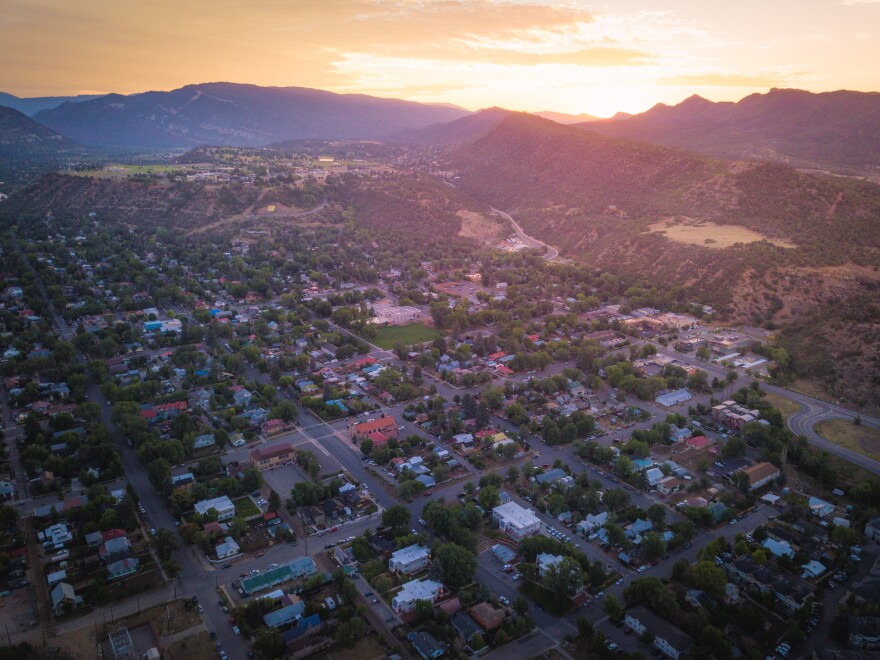A Utah-based company called Domo is showing public health agencies in the Mountain West where their COVID-19 transmission risk is coming from. Among other things, the service uses cell phone location data to identify which counties and states visitors are coming from, and pairs it with data about how bad the local COVID-19 outbreak is there. Public health officials in Southwest Colorado say the tool has shown that at the moment, the most active people in the area are people normally based in Texas, followed by people usually based in Arizona.
As the Durango Herald reported, the area is seeing high tourism despite the pandemic, with Durango hotels at 75% occupancy for most of July, which the Herald says is only a 10% decrease compared to last year.
“In Archuleta County, which is Pagosa Springs, Colorado, the vast majority of the activity is tourists and most of them are from Texas,” said Brian Devine, the deputy incident commander for the COVID-19 response for San Juan Basin Public Health, which serves two counties in Southwest Colorado. “In fact, the data tells us that there's more people from Texas out and about on the streets of Pagosa Springs on any given day than there are residents of Archuleta County out and about. That doesn't mean that there's actually more Texans in the county, just that more of them are active and doing things and using their phones.”
And that high level of activity might mean they pose a greater risk when it comes to spreading COVID-19. Aside from the Texans, there are also strong contingents of visitors from the area around Phoenix, Arizona, and from a New Mexico county just south of Durango.
Devine says if the data had instead shown that most activity was from residents, they’d be doing a lot more communication about staying home and avoiding nonessential activities.
“But the tourists -- they're already here, they're already out and about, they're already doing social activities,” said Devine. So, instead, they’re focusing messages around how to prepare businesses “not to become a center for transmission of disease,” and encouraging mask-wearing. He also said the data suggests that statewide models might not apply to areas like his that see higher rates of tourism, so Devine has requested a region-specific model instead.
Domo usually provides business insight data to private companies but since the pandemic has also begun serving public health agencies.
Mark Maughan, Domo's vice president of business operations and analytics, said states like Utah, Iowa and Nebraska are using a service Domo calls COVID-19 Crisis Command Center.
“That is a special-built solution for them that brings state and government data together in one place and allows them to make decisions based on that data,” said Maughan, who emphasized that the company isn’t selling the data itself but is instead bringing disparate sources of existing data into one place.
“For example, the state of Utah is using hospital data from the various hospitals around, as well as state department of health data, bringing that all together for, say, testing,” said Maughan. “They want to know all the testing that’s happening in the state. They bring that into one application within Domo where they can see...how many tests are being administered, what the test response time is, how many were positive, and then are able to take that and make decisions based on that information.”
He said state contracts tend to cost between $1.5 and $2 million for a year.
Brian Devine said the Colorado health department has also purchased the service and is sharing it with local agencies in the state.
This story was produced by the Mountain West News Bureau, a collaboration between Wyoming Public Media, Boise State Public Radio in Idaho, KUNR in Nevada, the O'Connor Center for the Rocky Mountain West in Montana, KUNC in Colorado, KUNM in New Mexico, with support from affiliate stations across the region. Funding for the Mountain West News Bureau is provided in part by the Corporation for Public Broadcasting.
Correction: A previous version of this story had a headline that included Utah. Utah uses Department of Transportation data, but does not currently use cell phone data.







